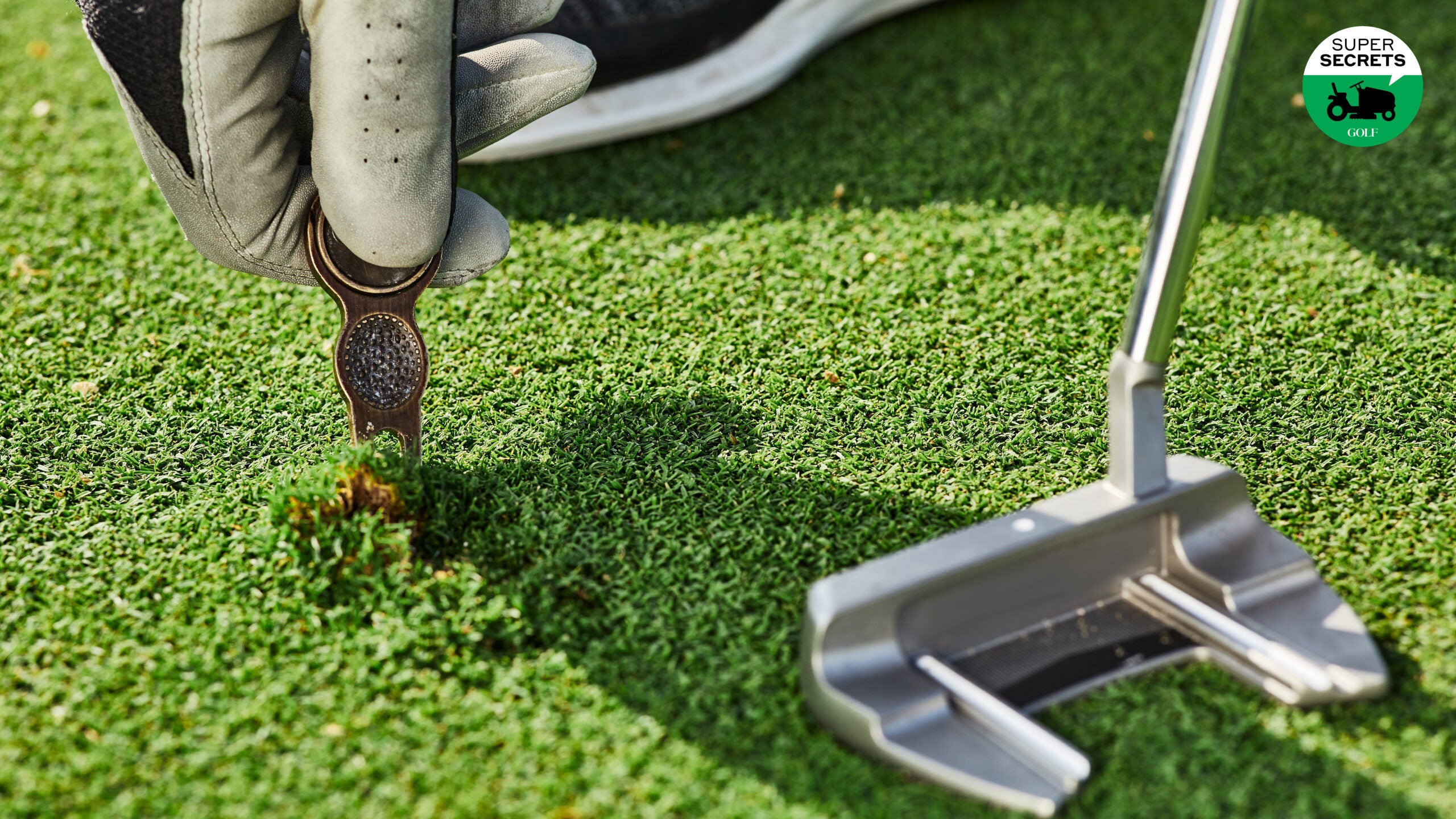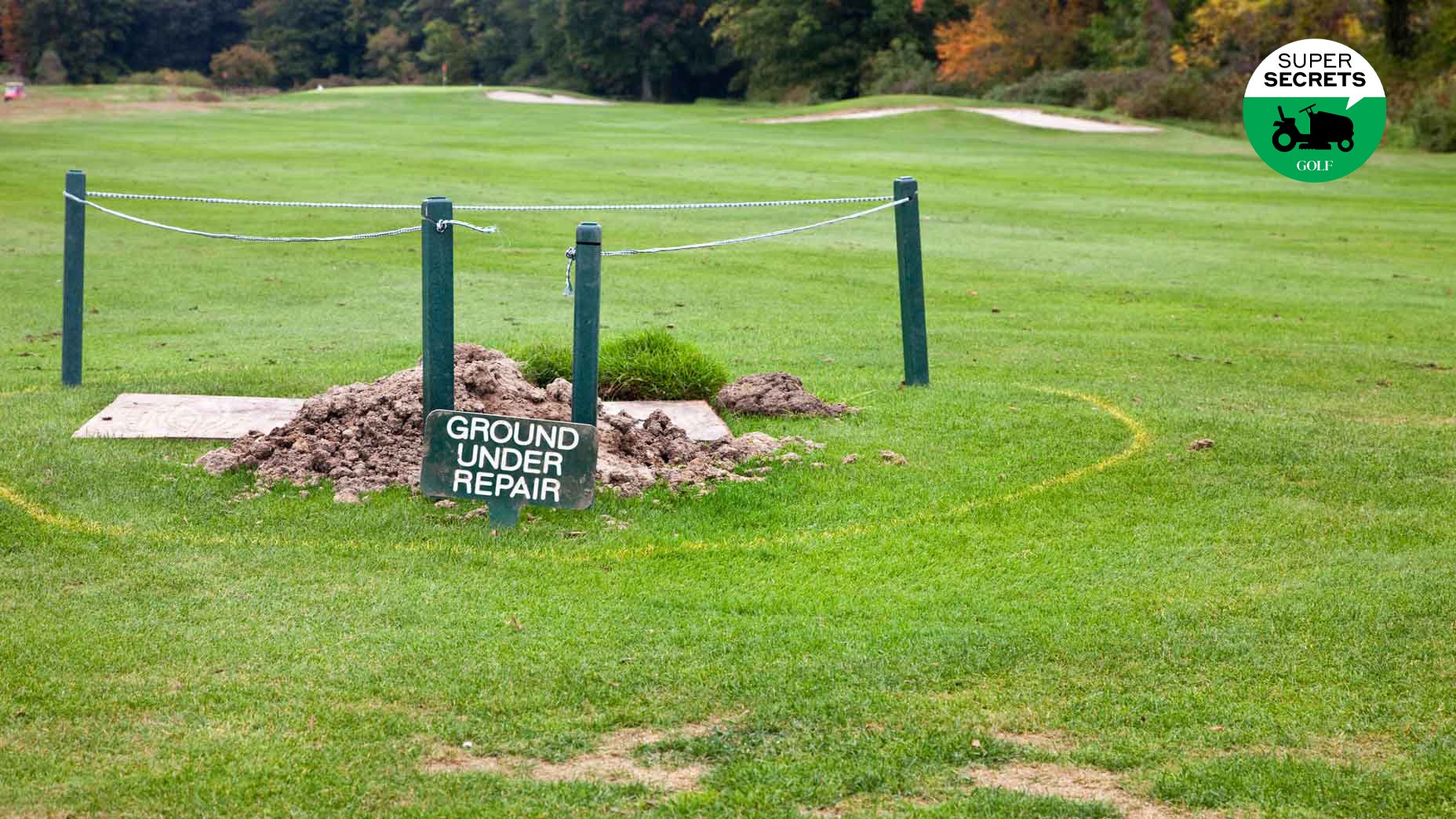Remember Angus MacGyver, the titular star of a TV show about a secret agent so resourceful, he once fashioned a hang glider out of a fallen satellite?
Dude would have made a good superintendent.
For all the standard practices they employ, the people who tend to our golf courses get plenty creative in times of need, dreaming up all kinds of maintenance hacks.
With help from the Golf Course Superintendents Association of America, we asked superintendents around the country about their favorite course-care workarounds. Here are seven of those tried and true tactics, some of which are useful for golfers, too.
No divot-repair tool? No problem
A tee is the obvious — and popular — stand-in. But in a pinch, one California super told us a car key is his go-to. The same pencil you use to keep score will also do the trick, but it won’t start your vehicle after the round.
A shortcut to smoothing bunker sand
At the top-ranked golf course in the world, you’ll find a ton of bunkers. But no bunker rakes. After playing from the sand, golfers are asked to smooth things over with their feet. The process is fast and simple. And If it’s good enough for Pine Valley, it’s probably a decent fallback at your local muni, too.
The many purposes of a pocket knife
Pocket knives work nicely on ball marks, too. But that’s not their only on-course purpose. A super in Arkansas told us that he carries one around to cut rope for staked-off areas; dig broken tees out of the ground on tee boxes; and remove goose droppings from the greens before the mowers smear them across the putting surface. “My knife becomes dull pretty quickly, using it for all these things besides cutting,” the super said. “But I just buy $5 Walmart knives and replace them when needed.”
A fresh-looking cup without cutting a new one
Time is short. So is staffing. When he’s readying the course for a busy day and he hasn’t had a chance to change the cups, a Massachusetts super told us, “I lift the cup out of the hole, give it a twist, set it level to turf height, lightly tamp around it, then re-set it with a cup setter.” The result “looks like a fresh-cut hole.”
Mowing without blades
Late in the season, when grass is barely growing, turf is susceptible to damage, particularly on the greens. At that time of year, the Massachusetts super told us, he often instructs his crew to remove the blades from their triplex mowers before they use them on the greens. As the blade-less mowers pass over the putting surface, “they take off the morning dew and give the look of a freshly mown green, without causing injury.”
Filling divots with bunker sand
At a Nebraska course where the bunker sand is the same as the sandy material used for topdressing, the super often fills divots around the collars with sand from the traps. Some golfers on the property have learned to do the same.
Watering frost
During cold spells, a Vermont super told us that he minimizes frost delays by waiting until the air temperatures rise above freezing and then turning on his irrigation system at a low setting, watering the turf just enough to melt away any lingering frost.










